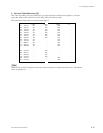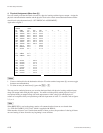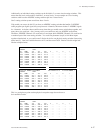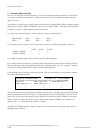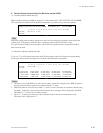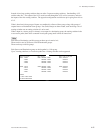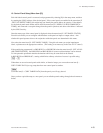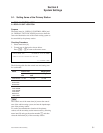
4-21
ROUTING SWITCHER SYSTEM (E)
4-4. Basic Setup Procedures
Source Group
S001:IN003
:IN004
:IN005
:IN006
S002:IN010
:IN015
:IN023
:IN027
PATHS
1:S001-N001-D001
2:S002-N002-D001
Net Group
N001:OUT003-IN041
:OUT004-IN042
:OUT005-IN043
:OUT006-IN044
N002:OUT023-IN051
:OUT024-IN052
:OUT025-IN053
:OUT026-IN054
Destination Group
D001:OUT033
:OUT034
:OUT035
:OUT036
D002:OUT056
:OUT057
:OUT058
:OUT059
Instead of one large routing switcher, there are often 2 separate routing switchers. One handling 4:2:2,
and the other 4fsc. The output of the 4:2:2 would cascade through the 4:2:2 to 4fsc converters, and on to
the inputs of the 4fsc routing switcher. The opposite configuration would be set up for going from 4fsc to
4:2:2.
What is done here is that groups of inputs are combined in a Source Name group, along with groups of
outputs known as Destination Name groups. Net (Path) Groups are then created, each one being a list of
routing switcher outs to routing switcher in’s to be used.
When a input in a source group is selected, or an output in a destination group, the routing switcher looks
at successive paths (their order as entered in each path group) until it finds an unused one.
n
Each Source, Destination, and Net group can have up to 4 entries in it.
There can be a total of 20 Source, and 20 Destination groups.
There can be up to 40 Net groups.
Each Source and Destination group are tied together by 1 Net group.
Up to 3 routing switchers, or 2 recursive paths into 1 routing switcher can be supported.





